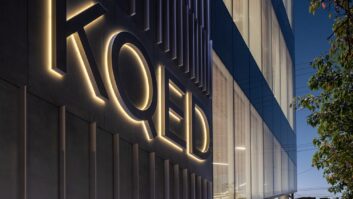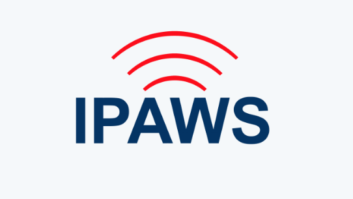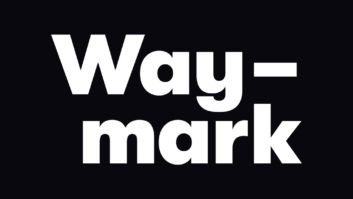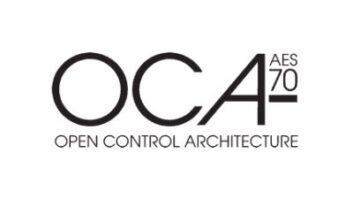IBOC Update – Jul 21, 2004
Jul 21, 2004 9:00 AM, By Mark Krieger, CBT

Stay up to date on the latest IBOC news, business and technology information with the twice-monthly newsletter from Radio magazine.
Index:
- Foti on FM IBOC Surround: “Its all about the Wow Factor”
- Texas Instruments Offers Second-Generation HD Radio Chip Set
- Ibiquity Certifies Variety of HD Radio Receiver Modules
- IBOC by State: Colorado
- FCC Extends IBOC Comments Period by 16 Days
- HD Radio Terminology
- JVC HD Receiver to Debuts This Month
To receive these articles twice a month in your e-mail, subscribe to the IBOC Update – Insight on HD Radio e-newsletter. Click here to subscribe.
Technology/ApplicationsFoti on FM IBOC Surround: “Its all about the Wow Factor”
Speaking at the Conclave convention in Minneapolis last week, Omnia Audio’s Frank Foti told an enthusiastic crowd that surround sound via IBOC digital FM broadcasting is the kind of application that will drive consumers to spend their hard earned money on HD Radio receivers. When an average listener hears the difference between analog AM and AM HD Radio, he or she says “Wow,” but that reaction disappears when comparing FM analog and HD Radio — that is, until a surround decoder and program material are introduced.Foti pointed out that the possibilities of surround are pivotal not only for broadcasters, who are now posed to lose large chunks of audience to satellite radio and Wi-Fi or cellular-based streaming audio, but to the recording industry as well. In an era where record sales have slumped or show only marginal expansion, the possibility of issuing new surround remixes of hundreds or even thousands of classic recordings looms huge in terms of its potential for profits. But such a renaissance can’t be realized without a showcase for the new releases — and that’s where HD Radio Surround comes in. “Imagine,” said Foti, “what it would mean to a recording label if it could suddenly re-release the entire Bruce Springsteen catalog in surround, and the sales were there to back it up.”Omnia Audio’s interest in surround is not purely platonic. The company, working jointly with its parent company Telos Systems and noted coding developer Fraunhoffer (FhG) are in the process of finalizing specifications for a true discrete version of HD Radio-compatible 5.1 surround audio. The system auditioned with positive reviews at the NAB convention in April, but more work remains to be completed before the system can be submitted to Ibiquity for certification, according to Foti.When asked how Ibiquity’s certification of SRS Labs’ Circle Surround Technology last month would impact the Omnia/Telos/Fraunhoffer development, Foti was upbeat, explaining that the certification process is “agnostic” – or nonexclusive – in its approach. Ibiquity’s interest is in maintaining the integrity of its system and assuring whatever is put out there will work, he explained, and the door remains open to innovation. Unlike the dedicated hardware needed to implement AM stereo in the 1950s and 60s, or the AM stereo debacle of the late 70s, DSP-based receivers can be upgraded in the aftermarket, thus allowing for new options to be introduced. But without the ability to create a new buzz among consumers, Foti feels that radio will suffer serious losses to emerging program delivery technologies.Omnia, et al, will demonstrate its FM IBOC digital 5.1 surround system again at the NAB Radio Show, to be held in early October in San Diego.BusinessTexas Instruments Offers Second-Generation HD Radio Chip Set
Texas Instruments has released information on its second-generation HD Radio DRI 300 and 350 decoder modules, which the company says will reduce manufacturer’s design costs, allow for easy software upgrades and reduce overall both time and expense in bringing HD Radio receivers to market.The new modules claim to satisfy the single major concern of current and would-be HD Radio receiver producers: cost. The key to savings is TI’s systems integration approach using the DRI300, which provides HD Radio decoding combined with MP3/WMA functionality in a single package, or the bolt-on appeal of the new DRI350 that adds tuner and AD/DA conversion functionality in addition to the features offered in the 300.Uncertainty about which types of formats will ultimately be implemented by HD Radio broadcasters, such as surround sound or secondary audio channels, is no longer a barrier to entry due to the software-addressable DSP employed in both modules. Consumer convenience features such as instant rewind and other Tivo-like functionality can also be supported.According to TI spokesman John Gardner, sample quantities of the chip sets have already beeen shipped to after�market and OEM receiver manufacturers with production quantities expected to ship this fall. Cost of the new chipsets is said to be about half that of comparable first generation decoder sets.Ibiquity Certifies Variety of HD Radio Receiver Modules
Ibiquity Digital has certified HD Radio receiving modules manufactured by Alps Electric, TBK Electronics and Toko for use in finished consumer radio products to be marketed in the U.S. The event marks a promised arrival of easy-to-implement HD Radio devices for consumer electronics manufacturers.For Alps, the certification applies to its TDGA2 D-DICE front-end RF tuner, designed for automotive HD Radio receivers using second-generation platforms. Alps’ TDGA1 series front-end RF tuner for first-generation platforms was certified by Ibiquity in November 2003.TBK’s entry, the TDI 2001-A0 decoding module, is designated for use in both automotive and home HD Radio receivers, and uses Texas Instruments’ DRI250 chip set to provide an all-in-one system that integrates the RF tuner, analog baseband demodulator and the HD Radio decoding function. TBK claims that the TDI 2001-A0 is the world’s first DRI250-based module to integrate all HD Radio functionalities in a single platform.TBK is also developing an IDM based on the DRI300 for the Philips platform and a more cost-effective all-in-one module. Both are expected to be available for production within this year.Toko rounded out the new entries with two decoding modules intended for automotive use, the TME-1225 and TME-1235. These customer-specific modules, both of which utilize the Texas Instruments DRI200 chip set, were designed for HD Radio products scheduled to launch later this year.All three manufacturers indicate that interest in HD Radio products has accelerated since last winter, and each hopes to ship large-scale production quantities of product by year’s end.IBOC Across AmericaIBOC by State: Colorado
Ibiquity has a list of stations that have licensed HD Radio technology and notes those that are on the air now. IBOC by State will look at various states and list the stations that are making the transition.StationFormatCityOwnerOn Air KPRE-FM 89.9 News/Classical Denver Colorado Public Radio No KPRH-FM 88.3 News/Info Denver Colorado Public Radio No KPRU-FM 103.3 Classical Denver Colorado Public Radio No KALC-FM 105.9 Hot AC Denver-Boulder Entercom Communications No KCFC-AM 1490 News/Talk Denver-Boulder Colorado Public Radio Yes KCFR-AM 1340 News/Info Denver-Boulder Colorado Public Radio Yes KGNU-FM 88.5 Educational/Eclectic Denver-Boulder Boulder Community Broadcast Association No KNRC-AM 1150 News/Talk Denver-Boulder NRC Corp. Yes KOSI-FM 101.1 AC Denver-Boulder Entercom Communications No KPOF-AM 910 Inspiration Denver-Boulder Pillar of Fire Yes KQMT-FM 99.5 Progressive/Classic Rock Denver-Boulder Entercom Communications No KUVO-FM 89.3 Jazz Denver-Boulder Denver Educational Broadcasting No KVOD-FM 90.1 Classical Denver-Boulder Colorado Public Radio No KUNC-FM 91.5 Public Ft. Collins-Greeley Community Radio for Northern Colorado No KPRN-FM 89.5 News/Info Grand Junction Colorado Public Radio No KCFP-FM 91.9 Classical Pueblo Colorado Public Radio No KKPC-AM 1230 News/Info Pueblo Colorado Public Radio NoFCC UpdateFCC Extends IBOC Comments Period by 16 Days
In a move expected by many industry observers, the FCC has extended the filing deadline for comments on its sweeping FNPRM and NOI concerning IBOC digital broadcasting — but not for as long a period as some had asked for.In an order dated July 8, FCC Mass Media Bureau Chief Ken Ferree granted an extension of 16 days to the comments period originally slated to close on July 16. This ruling moves the closing date for filing comments on replies to Aug. 2.The FCC’s action came in response to a joint request for a 61-day extension from the American Federation of Television and Radio Artists (AFTRA), the American Federation of Musicians of the United states and Canada (AFM), the Future of Music Coalition (FMC), the National Academy of Recording Arts and Sciences (Recording Academy), and the Recording Artists Coalition (RAC), collectively referring to themselves as the Recording Artist Interest Commenters (RAIC).In his comments, Ferree noted that while RAIC had given “good cause” for an extension in their request, the two months sought were unreasonable under the circumstances. The order went on to explain that a 16-day period would provide “some assistance” to those seeking more time, while not causing undue delays in the rulemaking process.In general, RAIC, like the Recording Industry Association of America (RIAA), has expressed significant concerns over how IBOC digital broadcasting might promote unauthorized digital duplication of copyrighted material, as well as how the use of secondary audio channels (SAC’s) might increase the number of program channels available to large broadcast groups such as Clear Channel Communications. Interests in the recording industry have advocated that the FCC mandate insertion of a digital protection flag into the digital audio stream in order to prevent unauthorized duplication.HD Radio TerminologyAn Introduction to the New Language Surrounding HD Radioextended-hybrid IBOC: The second of three modes in the Ibiquity FM IBOC system that increases data capacity by adding additional carriers closer to the analog host signal. The extended-hybrid IBOC mode adds two frequency partitions around the analog carrier. In this mode, digital audio data rate can range from 64kbs/s to 96kbs/s, and the corresponding ancillary data rate will range from 83kb/s for 64kbs/s audio to 51kbs/s for 96kbs/s audio.OEM: Original Equipment Manufacturer. Refers to what is commonly known as the factory audio system installed in a car by the automaker before purchase.ProductsJVC HD Receiver to Debuts This Month
JVC Company of America announced that Ibiquity has certified its KD-SHX900 HD Radio car receiver, and that the single-DIN, in-dash unit would appear in retail stores before the end of the month.The availability of the JVC receiver is seen as significant by IBOC digital radio proponents, who point out that the availability of HD Radio components produced by three well-known consumer brands (Kenwood, Panasonic and JVC) demonstrates that IBOC digital broadcasting is becoming widely available to the American consumer.To receive these articles twice a month in your e-mail, subscribe to the IBOC Update – Insight on HD Radio e-newsletter. Click here to subscribe.












